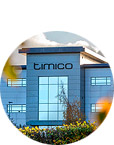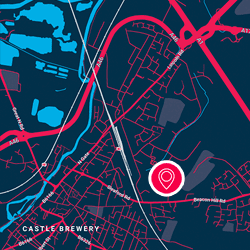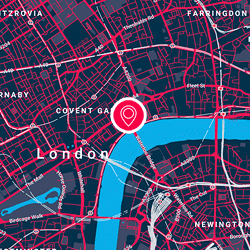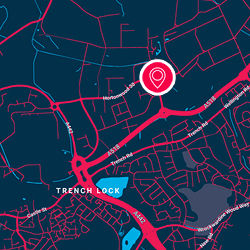BLOG
The Importance of Agile and Adaptable IT Infrastructure
Agility is often the driving-adjective of most modern IT infrastructure projects. No organisation wants to spend on new solutions without the ability to be more responsive to the demands of their business. Nor do they want IT solutions built with a ‘one-size fits all’ approach.
In today’s technology climate, your business cannot predict what will be considered innovative in your industry in the next 5 years, or the technology that can excels your business above competitors in the future. For now, you must be proactively assessing your IT infrastructure to be more responsive to the technological developments of the future in order to increase their agility, while making sure to implement IT solutions that are most suited to your industry with the goal of targeted-agility in mind.
Can IT Infrastructure be agile?
Undertaking digital transformation initiatives will allow your business to achieve a higher level of responsiveness and agility, if done correctly. Your key decision-makers need to realise that transformation goes hand-in-hand with adaptable IT infrastructure, and therefore is a continual process that soldiers on long after the initial project finishes. Additionally, adopting a more agile infrastructure will lead to significant reduction in turn-around times for rolling out IT projects internally, and make it easier for your business to streamline the delivery of products and services to your customers. Increased agility in IT infrastructure will give you the platform to deliver better customer service, and compete better with even your largest competitors, such as Amazon. Put simply, a streamlined customer-centric environment is a better- and more competitive- environment, enhanced by digital transformation initiatives towards more agile and adaptable IT infrastructure.
So yes, IT infrastructure can be agile- and most importantly- it should be a priority for IT leaders to make their infrastructure adaptable, agile, and responsive to change in order to grow in preparation for what the future of IT offers.
4 points towards agile and adaptable IT infrastructure
#1 Define a clear strategy.
This is number one for successfully adapting to a more agile infrastructure. Digital transformation initiatives need clear drivers, in order to give your internal teams the incentive to get on board. Having a strategy with your predicted goals and a clear road-map of how you will get there will improve internal support and make it easier to find your footing towards adaptable and agile infrastructure.
#2 Find an owner in your team who can lead.
Designate a member of your team who can work towards improving agility. Internal teams or departments may still approach projects in skill-set silos. Find a digital transformation adviser who can be designated with pushing for digital transformation initiatives in your company. Employees should be able to go to this adviser figure for support and be given advice on where they can reduce silos, increase efficiency, and target-agility within their daily business processes.
#3 Select the right tools.
Deploy the right tools that will allow your business to support your goals for future growth. Setting the foundations for future growth will allow your business to become more adaptable to next-gen business initiatives. For example, if a retail business is setting up IT infrastructure for a new location store, they should make sure that their network is easy to replicate. This will make future expansion and growth easier, and streamline the ease of operational factors and maintenance across locations. In a digital transformation initiative looking to create more agile infrastructure, the ease of replication for important networks should be a priority.
#4 Accept and Promote Data as core to future business success.
Recognise that data should be a key decision point in your business for future growth. If you want an agile IT infrastructure, make sure to harness the power of data by implementing data-driven systems that provide you with the scope to improve how you operate. For example, more insight into customer data can equip your business with more knowledge about how you can best target and understand them better. This is important for future differentiation against large competitors and investing in these tools now can lead to a more adaptable future.
Paving the way for the Internet of Things (IoT)
One of the main disruptors of IT infrastructure in the foreseeable future will be the Internet of Things (IoT). This refers to the network of devices that allow appliances, physical devices, vehicles, electronics, software, and more communicate and exchange real-time data in order to improve processes.
For example, the most recent and “futuristic” demonstration of this network was made by Amazon. They utilise IoT devices to allow in-store shoppers at ‘Amazon Go’ to simply scan items they want with their smartphone, and then walk out the door. Shoppers are automatically billed via the card connected to their Amazon account, simplifying the shopping process and creating a system that is tactically queue-busting. From this, they not only streamline efficiency, but gain a wealth of data such as purchase history, spend, and any other information offered by the customer when signing up to Amazon.
Regardless of industry, IoT is guaranteed to shake things up. With more intelligent devices becoming connected to business processes, your company needs to turn IoT data into intelligent actions and outcomes in order to make use of the wealth of data available. This data can be translated into useful KPI’s, or be used for the prediction and optimization of business processes. Utilising this data will not only have a massive impact on IT infrastructure, but it will also make your business more agile for the future.
More data can allow your business to become self-organizing, streamlined, and more customer-centric. Moreover, internal teams can become cross-functional, with higher levels of agility developed from the wealth of data made available for them through the IoT.
However, these benefits can only be made possible if your IT infrastructure becomes more adaptable and agile through the process of digital transformation. The challenges of collecting, storing, and transporting data needs to be considered, and subsequently, how these processes will impact your IT infrastructure. For example, an analytics-based data pipeline is infrastructure that allows a business to capture raw analytic data from customer devices, website, or applications. The goal of this process is to make sense of data for actions such as targeted-customer marketing, robotic process automation, or data-based technology that gives businesses a competitive edge.
This is how your business can adapt your infrastructure to cater to IoT data, and translate it into intelligent actions and outcomes. The process of utilising data from the IoT will require increased storage capacity, adaptable and innovative server infrastructure, and increased security for businesses who have ambitions to be forward-thinking and IT-leading within their industry. With such competition from the IoT, it is evident that your business needs to be responsive by ensuring you have agile infrastructure.
Scale and Replicate
Another key indicator of what can allow your IT infrastructure to become more adaptable is the ability to scale both up, and down. The ability to have a flexible infrastructure is extremely important in the future. The number of conversion rates required for success becomes more competitive, and the ability to withstand large peak-seasons become crucial for year-long success.
For example, a business that experiences peak seasons (such as Christmas time, Halloween, or their summer sale) should choose IT infrastructure that can be scaled up, or down, depending on their season. A retailer may want more IT resources during their summer sale, compared to other points of the year.
Choosing infrastructure that caters to this will allow you to save on costs, and have the function to operate confidently at these crucial points. The flexibility of being able to get more laptops for your sales assistants, more end-points in different locations for your networks, or the ability to have a larger amount of visitors to your website without any downtime is crucial at peak points of the year. This demonstration of adaptable infrastructure is what will differentiate your business from larger competitors within your industry, and allow even middle-market businesses to keep up with large enterprises.

Timico
We deliver Connectivity, UC&C, Cloud & Hosting, Security and IT Managed Service Solutions to our customers, through Service Operations based in Newark, Winnersh, Telford and London.










